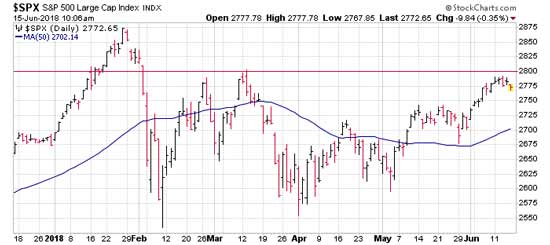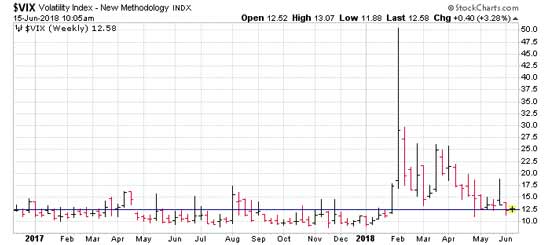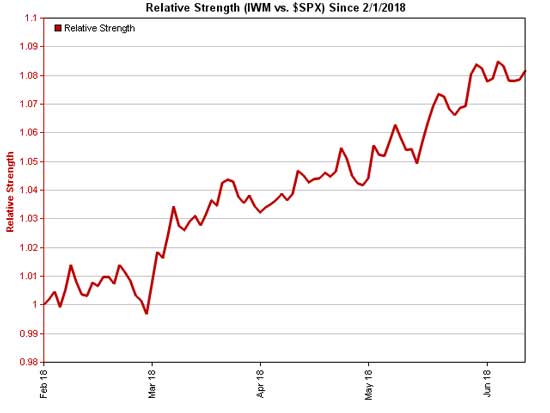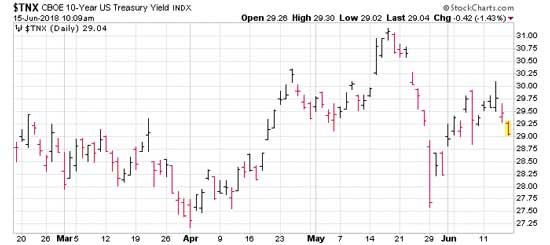There's a standard answer you hear a lot these days when talking heads and market pundits are asked how they see the current market. It's a phrase I've heard so often it's become cliché.
Cautiously bullish.
It's the ultimate hedge, which I think basically means you like the current uptrend, but that it could turn around any time. Okay, so how it that useful? Are you supposed to cautiously invest?
Frankly, I have no idea.
In truth, the fact that I hear those words so often is one reason I am steadfastly bullish on stocks.
No caution here.
Why? Well, caution means skepticism. It means you're not totally bought in.
Ever hear the phrase, "Markets climb a wall of worry"? Well, caution is worry. Caution means holding cash on the sidelines. And as long as I hear "cautious," this current bull rally has room to run.
When I hear "optimistic" and "all in" and actually see money flows supporting that sentiment, that's when I'll be worried. That's when I'll cash in my calls and start buying puts.
But for now, I'm bullish. Here's why.
[mmpazkzone name="in-story" network="9794" site="307044" id="137008" type="4"]
Bull Fuel: The S&P 500's 50-Day Moving Average
The S&P 500 50-day turned lower around March 22, an intermediate-term, neutral-to-bearish signal. In early June, the 50-day turned bullish by pointing higher.
Between those turning points, the S&P 500 lost only about a half percent, even though it suffered a 5% drawdown right after the bearish signal.
Don't Miss: This secret stock-picking method is so good, if you started with a small stake, a string of these picks could have earned you $1.2 million. Find out how it's done...
With the 50-day back in bullish mode, my models tell me the S&P 500 has a 2:1 probability of gaining ground on any given day. In fact, so far in June, the ratio has been more extreme - eight up days and three down days.
That doesn't mean the S&P 500 is without some headwinds. The round-numbered 2,800 level that marked a March top could offer resistance. After that, my current bull channel analysis shows 2,850 as a potential obstacle.
This second level is just below the January all-time high, which will likely have some traders taking short-term profits.

The CBOE Volatility Index Has Room to Fall
The VIX has been hovering between 12 and 13 throughout most of June. While low compared to the spikes we saw in February and March, the VIX remains above most of the daily readings recorded in 2017.
This tells me that the VIX has plenty of room to move lower, into the single digits. If it does, the market should continue to move higher, as it tends to move opposite the VIX.

Very Encouraging: Trading Volume Is Moving Up
Volume is on the rise, indicating money is moving back into the market from the sidelines. That's an encouraging trend for the bulls, though the fact that most analysts are "cautious" means that there's plenty of reserve buying power sitting on the sidelines.
The "Risk-On" Trade Is Thriving
This is something I've been harping on for weeks. "Risk-on" refers to investors willing to take on added risk to chase profits. This is seen when the tech and small-cap sectors - as represented by the Nasdaq and the Russell 2000 - outperform the broader-market Dow Jones Industrial Average and the S&P 500.
The Nasdaq and Russell 2000 seem to be competing - "Who can make the most new highs in a week?" - while the Dow and S&P 500 are happy just to break out of a trading range.
Must See: This method may be the only way in history to turn a small sum of money into $100,000 without batting an eye. Read more...
So far in 2018, the Nasdaq has tripled the performance of the S&P 500, while the Russell 2000 has more than doubled it. Against the Dow, comparison is even more one-sided. The chart below - showing the Russell 2000's outperformance, as tracked by the iShares Russell 2000 ETF (NYSE Arca: IWM), underscores this preference for riskier assets, a trend that should keep stock prices pointing higher.

Interest Rates Aren't Even Close to "High" Yet
Even with the quarter-point increase on Wednesday, interest rates remain well below their highs. In fact, the 10-year Treasury Index hasn't closed above the supposed market-crushing 3% level in more than three weeks.
Besides, the market has been prepared for 3.0% and higher on the 10-year for a while, so there's less chance of interest rate risk shaking the markets.

Now, it's all good and well for me to talk the bullish talk. Can I walk the bullish walk, as well?
That's easy enough to see in the track records of my Seismic Profits Alert and Night Trader services. In Seismic Profits Alert, all our open positions are calls. More to the point, I've recommended just two puts in the past two months.
And I've closed four straight call winners for an average profit of 85%.
Night Trader is similarly configured. We have nine open bullish stock recommendations and just two bearish puts among our option picks. We've booked five straight winning closes - all calls - for an average gain of 73%.
Like I said, I'm bullish. Period. There's no "cautiously bullish" in my outlook. This uptrend has legs. And I'm buying into it. You should, too.
This Trader Is Betting It All He Can Show You How to Turn $5,000 into AT LEAST $174,500
Chris Johnson is on pace to see 3,390% total winning gains this year.
And now, he's guaranteeing his recommendations will give you the chance to do the same.
If not, he's working for free.
So mark your calendar for one year from today...
Set a reminder on your phone...
And click here to learn how to join right now.
Follow Money Morning on Twitter, Facebook, and LinkedIn.
About the Author
Chris Johnson (“CJ”), a seasoned equity and options analyst with nearly 30 years of experience, is celebrated for his quantitative expertise in quantifying investors’ sentiment to navigate Wall Street with a deeply rooted technical and contrarian trading style.



